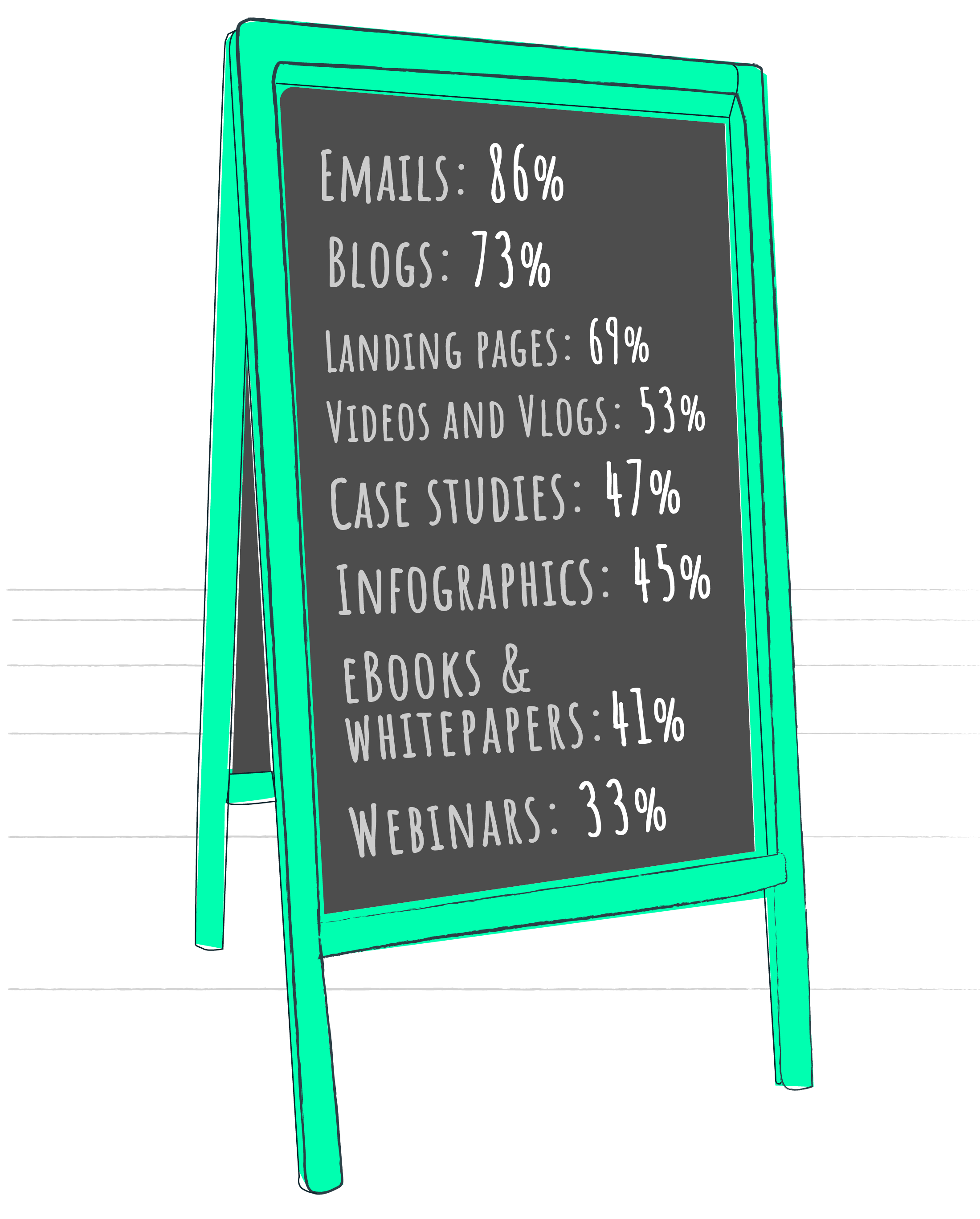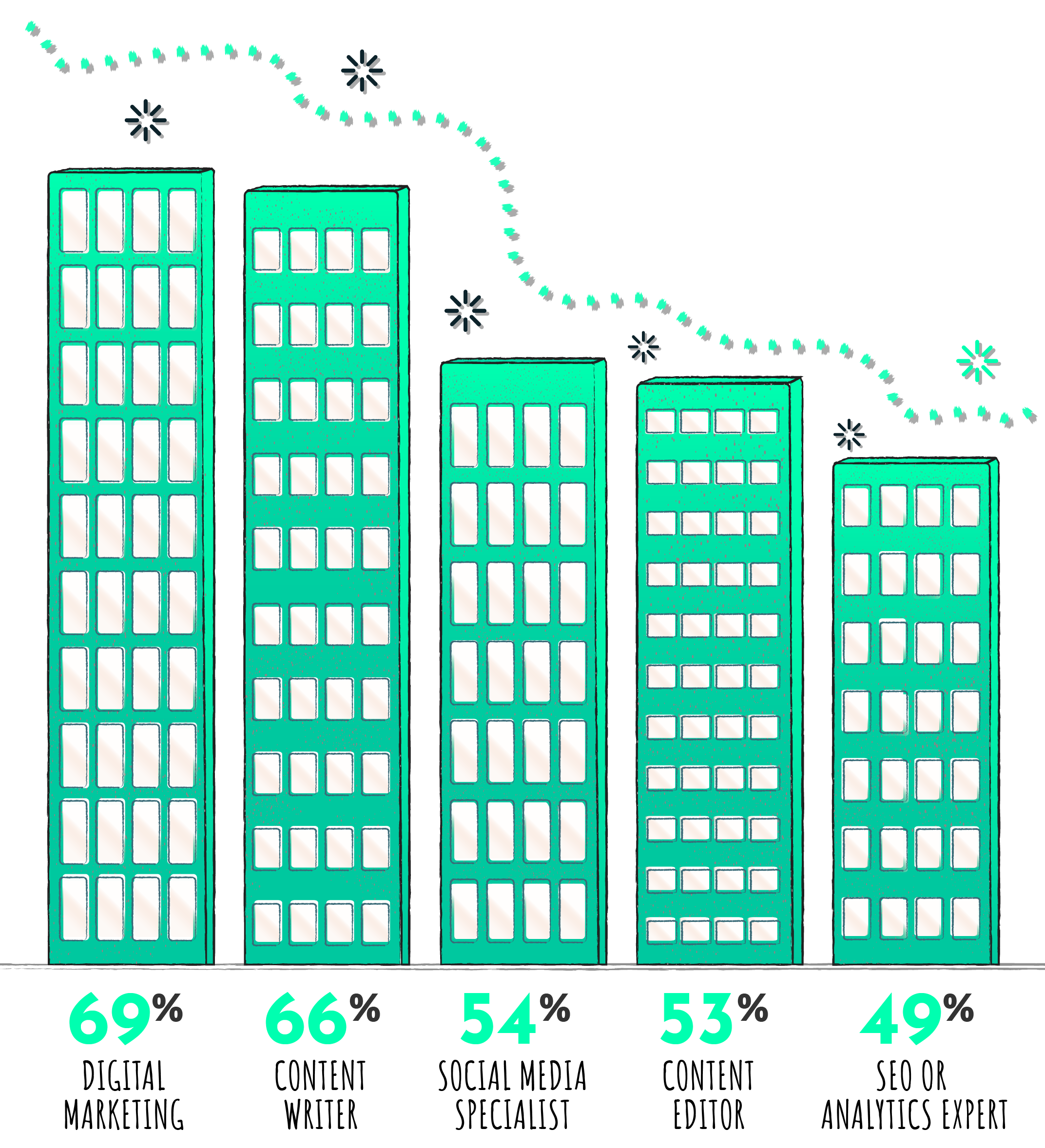

Karen Hesse
CEO 256
CEO 256


CONTENT MARKETING MATURITY


TOP METRICS MEASURED BY CONTENT MARKETERS
WEBSITE
TRAFFIC 85 %
TRAFFIC 85 %
LEADS
68
%
SOCIAL MEDIA
PERFORMANCE 68 %
PERFORMANCE 68 %
SEO
RANKING 61 %
RANKING 61 %
LANDING PAGE
CLICK-THROUGH RATE 53 %
CLICK-THROUGH RATE 53 %
CHALLENGES CONTENT MARKETERS FACE



SOCIAL MEDIA CHANNELS USED TO PROMOTE CONTENT
LINKEDIN
83
%
FACEBOOK
79
%
INSTAGRAM
79
%
TWITTER
76
%

